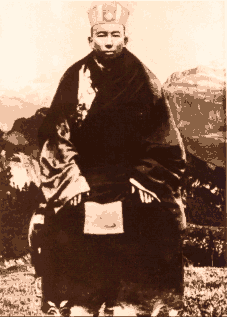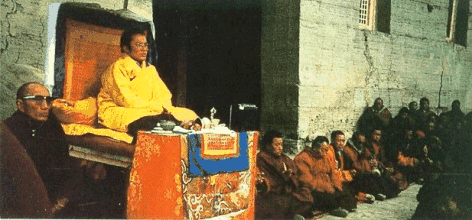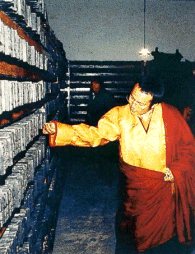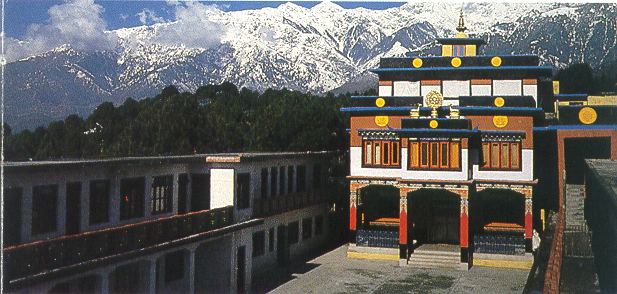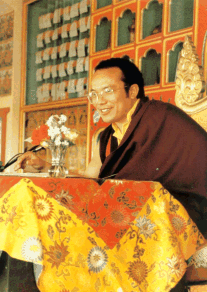After several more incarnations, one of which was
the Chinese Emperor, Tai Shen Chay, a person of great spiritual power, the Tibetan
incarnation Chokyi Gyaltsen 1377-1448), became the first to bear the title Tai Situ. The
title was given in China by the Ming Emperor, Yung Lo, in 1407, and though the full title
is lengthy it may be shortened to Kuang Ting Tai Situ which contains the
essential meaning "far reaching, unshakable, great master, holder of the
command."
In the early 17th century, the 9th Karmapa Wangchuk Dorje, a great master of the
Kagyu School, acknowledge the spiritual mastery of the Tai Situpas when he bestowed he Red
Vajra Crown upon the 5th Tai Situpa, Gelek Palzang (1586-1657). This crown may still
be viewed when it is worn by the Tai Situpa during a ritual of his lineage, the Red Vajra
Crown Ceremony.
The incarnation that is one of the most well known and which typifies the activity of the
Tai Situpas, is the 8th Tai Situ, Chokyi Jungle (1700-1774), whose life was characterized
by extraordinary accomplishment. He was a consummate scholar and author of many texts. His
famous Tibetan Grammar is still the foremost advanced text in practical use
today. He taught in Sanskrit, Nepali and Chinese. He was renowned for his spiritual
ability in forecasting future events. he founded Palpung Monastery in the Kingdom of
Derge, located in eastern Tibet, which became the monastic seat of the Tai Situpas. With
his disciple Tenpa Tsering, the King of Derge, he established the Derge Printing Press
which produced over half a million wood block prints of such fine quality that the major
ones have been reprinted in modern editions and circulated to Tibetan archives in
libraries throughout the world. He was a doctor, an astrologer, a poet and an artist who
developed new styles of Tibetan thangka painting. Students of his went on to excel
in these various fields, and from that time onwards Palpung Monastery became an
important center of learning and culture. |
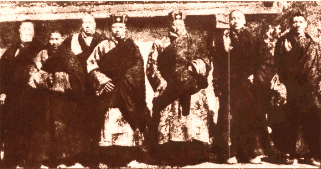
Rangjung Rigpe
Dorje, His Holiness the Sixteenth Karmapa, and Pema Wangchuk Gyalpo, the Eleventh Tai
Situpa,
together with high ranking incarnation lamas from Palpung Monastery on the
occasion of His Holiness the Sixteenth Karmapa's visit to Palpung Monastery in 1937 |
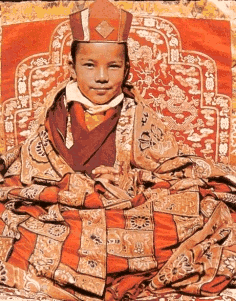 |
His work was continued by the 9th Tai
Situpa, Pema Nyingche (1774-1853), who fostered an important renaissance of Buddhist
thought in the stimulating intellectual climate of Palpung. Pema Nyingche possessed in
talent of recognizing future brilliance in young minds; one of his main disciples was
Kongrul Lodro Thaye, (1813-1899), a scholar of phenomenal accomplishment, and author of
over 200 definitive texts which consolidated much of the learning of the four schools of
Tibetan Buddhism.
| |
| <<< The Twelfth and current Tai Situpa as a child in Darjeeling, India |
|
|
